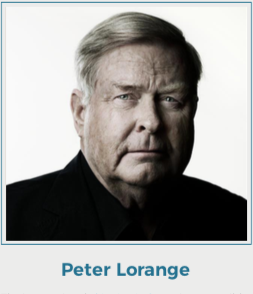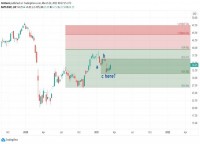|

The international shipping industry is responsible for the carriage of around 90% of world trade. And it offers investment opportunities that can be very rewarding if you apply the strategy that is suited to your liquidity levels, says economist Peter Lorange. He explains how in this interview.
Peter Lorange started his academic career in Norway and at Harvard Business School in the 70s, and has lectured and written books on business management, entrepreneurship and shipping investments ever since. He has also been the head of a shipping company and a board member for several multinationals. He recently founded the Lorange Network, a learning and sharing platform for family office principals and family business owners. And he still invests in shipping. How to play a part in the life and blood of the global economy Opalesque: Please tell us about the market cycles of the shipping industry at the moment. Peter Lorange: The various segments of shipping, for instance the smaller versus the larger tankers, the smaller versus the larger bulk carriers, or the chemical tankers, tend to follow slightly different cycles. Tankers are basically a little better off cycle-wise and they are starting to follow an upward trend, while bulk carriers, both large and small, are at the bottom of the cycle. It’s a matter of supply and demand. It is also about the expectations of the ship owners. There can be orders for too many bulk carriers for example. In terms of cycles’ lengths, typically, you have three to four bad years, and then it shoots up for a year or so, and then it is back to three to four bad years. But these cycles are becoming slightly different in shape because the ship building industry, i.e. the yards, are able to put together new ships much faster now than before. That’s why the bottom of cycles tend to be longer and the peak shorter. Among the long bottoms and the short peaks, there are small valleys and hills along the way. I tend to buy cheap and sell high even though the basic cycle is at the lower end, because there are these small variations. “In the short-term asset play strategy, you try to buy cheap, wait it out for one to three years, and then sell high.” Opalesque: You have two basic strategies for shipping investments. Could you explain the first strategy, which tends to be more short-term? Peter Lorange: The first is what I call short-term asset play. Basically, that means that you try to buy cheap, wait it out for one to three years, and then sell high. There are perhaps three issues above all, to pay attention to with this strategy. First of all, you should make sure you buy relatively standard ships – I would call it, “Volkswagen +”. You don’t want to buy ships with gold plating, extra air-conditioning or other frills. The ship would typically be four to five years old and in good shape. The second issue is, in order to lessen the financial burden of holding the ship from the time you buy?it to the time you sell it, it’s often advisable to put?the ship into a so-called ‘pool’. So for instance if you buy a bulk carrier, and you put it into a bulk carrier pool, you may make some money during the holding period, sometimes, enough to break-even. In any case, you lose less than if you didn’t do that. The third issue is, to do this strategy, you must have a lot of cash, and you must not borrow a lot on the ship. It’s important. This is not a good strategy if you have no liquidity. In the industrial shipping strategy, you get a long- term charter contract from an industrial company. Opalesque: Could you explain your second strategy, which tends to be more long-term? Peter Lorange: The second strategy is called industrial shipping. You try to get a long-term contract, say, with a chemical company or a trading company or another kind of industrial company, to carry their goods for, say, a period of 10 years. This company gives you a long-term charter, typically what we call a bareboat charter: they buy the right to hire the ship from you, but they have their own crew, their own maintenance, their own fuel, etc. so it’s up to them how they run the ship. And the ship should be financed very heavily. You can borrow a lot and thus make even more money. Typically you try to borrow, say, up to 70% on the ship. After 10 years or when the bareboat charter is over, you sell the ship, typically to scrap value, as it will tend to be worn out by then. If you are going for details, you could have a put-call option at the end of the bareboat period so that if the scrapping price of steel is high, you call, take over the ship, sell it to the scrappers and make some extra money. If the price of steel is low, you put, the bareboat holder will have to sell the ship to the scrapper and make a loss. There is one more variation of this: there are still some big family-owned shipping companies around. These families in general do not in fact own all of their ships. They may order, say, four new ships in China and hold on to two of them. Investors like I buy the other two and charter them back to the family- owned company at a long-term bareboat charter. These ships will carry the name of the family-owned company, their colours, etc. You cannot see that the ships do not actually belong to them. Many of these family-owned companies like this arrangement. There are four main areas of innovation: regulation, cost-reduction, related to climate change, and management. Opalesque: What are the most recent innovations in shipping and logistics that investors should not overlook? Peter Lorange: I have just completed a book called Innovations in Shipping that is coming out on Cambridge University Press next year. There are perhaps four main areas of innovation. The first one is regulations from the public sector, like the United Nations and the IMO (International Maritime Organisation). There are two new important regulations. One, which started in 2018, requires that water that is dispatched from the ships must be clean. That means many companies have had to install clean water treatment machines onto their ships. The other one is even more dramatic?and was implemented because of global warming. Shipping companies must install scrappers in their ships, which clean the fuel so that no CO2 is released. But if the ships are relatively small, they may have no space for scrappers. So they will have to use light fuel, like diesel fuel, which is more expensive (though it does not affect the efficiency of ships). Some shipping companies are speculating that oil refineries will change their refining mix capabilities, so that there will be more reasonably-priced light fuel in the future, and so they are not installing scrappers. The second one is related to cost-reduction. The industry is constantly trying to innovate on cost management. There are three important changes here. The first is a new generation of underwater paint coating for ships. These new coatings release anti-particle growth for a period of three to four years. So, the ships run better for longer. The second is better propellers, rudders, and better dynamic structures. The third is better and faster loading and unloading equipment. The third area of innovation is related to climate change. For example, the ocean to the North of the Russian Arctic used to be covered with ice which is now melting. We are now building ice-reinforced ships that can go through those areas (the Northern Sea Route). As there is a bit of ice left, these ships are strong, with powerful engines, and designed for the shallow waters we find there. And then you have innovations in the navigational equipment, to better predict weather and pick more optimal routes as a result. The fourth area is within management. There?are computers now which allow ship owners to manage entire fleets of, say, more than 100 ships. That means they are optimising the use of the fleet relative to various cargos and routes. It is almost?like running an airplane fleet. The other aspect?of that area of innovation is integrated logistics chains. You do the shipping, the storage and then?the transportation, all as one function. So if you?are, say, Adidas, you produce the sports gear in China, you send it with Maersk, you store it in Rotterdam, and then it’s driven by truck to various store facilities. Interestingly, Jim Hagemann Snabe, the new chairman of A.P. Moller - Maersk (the largest container shipping company in the world) happens to be the former CEO of SAP, a large German software company. So Maersk may be thinking of themselves more like an IT firm than a shipping firm. “When shipping is part of your investments, speed is important. Family firms are generally much better equipped to act fast than publicly traded companies.” Opalesque: What are your observations with regards to shipping investing within the family office environment? Peter Lorange: If you want to invest in shipping only, the problem is that it is probably too capital- intensive. For example, I used to own a fairly big shipping company and I never had any free cash. I could hardly even take a vacation. All the money I made went into buying new ships. They easily cost $100m a pop. So you tend to be cash-strapped. For that reason, I would say, family firms should generally stay away from shipping. On the other hand, I think that a part of the activity in the family office portfolio might be in shipping. For instance, I own parts of a number of ships and I have made a lot of money on them. My investments are in four types of ships: small bulk carriers (from 10,000 to 40,000 tons), chemical carriers (around 25,000 tons), small tankers (60,000 to 80,000 tons) and car carriers. When shipping is part of your investments, speed is important. You need to decide to get in or out fast. Family firms are generally much better equipped to act fast than publicly traded companies. Also, the risks are often quite high. Family firms may be more ready to take such risks. So they can be well equipped to focus on shipping for these reasons.
| ||||
|
Horizons: Family Office & Investor Magazine
Shipping: How to play a part in the life and blood of the global economy |
|





 RSS
RSS








